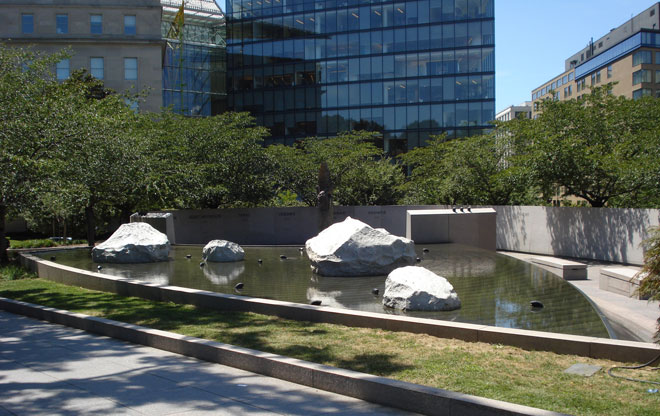
The Archipelago
The site’s open perimeter along Louisiana Avenue provides an expansive view of the memorial. Large granite boulders set in a shallow reflecting pool represent the five generations of Japanese Americans that were affected by World War II and symbolize the archipelago of Japanese islands in the sea. The zen-like placement of the rugged boulders contrast with the pool’s smooth glassy texture.
Image: Liz Guthrie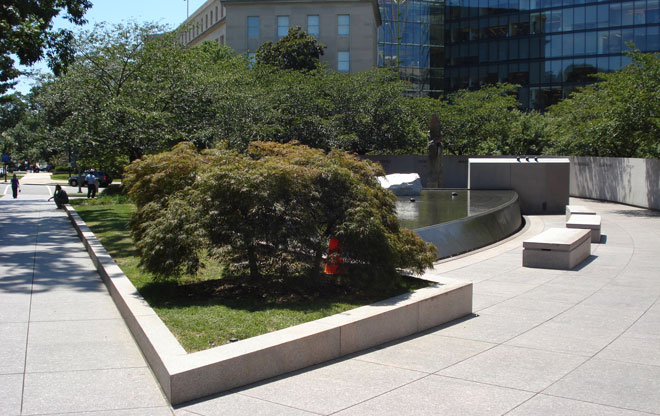
Integrating Forms and Textures
The gently sloped grade along Louisiana Avenue and curved lines of paving integrate the memorial within the urban context, and invite users into the site. Low groundcovers and shrubs soften the hard edges of the site, while a Japanese maple anchors the entrance to the memorial. In the background, Japanese cherry trees flank the site’s granite walls, providing subtle shade and texture, while also buffering views of the surrounding office buildings.
Image: Liz Guthrie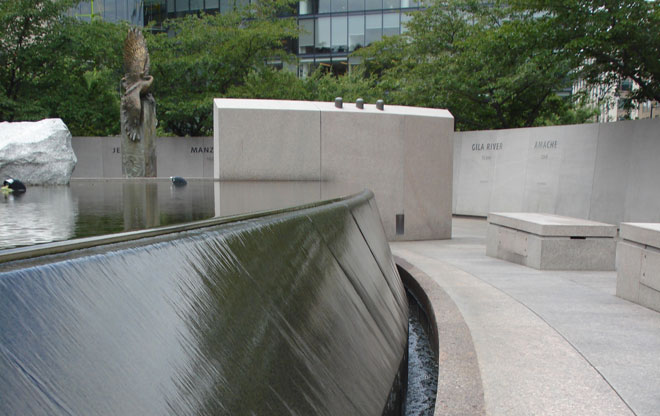
Manipulating Forms for Sound and Reflection
The gentle gradient and angled edge of the reflecting pool creates a subtle variation in the flow and form of the water as it moves toward the narrowest point, affecting the sound of the water as you move throughout the site.
Image: Liz Guthrie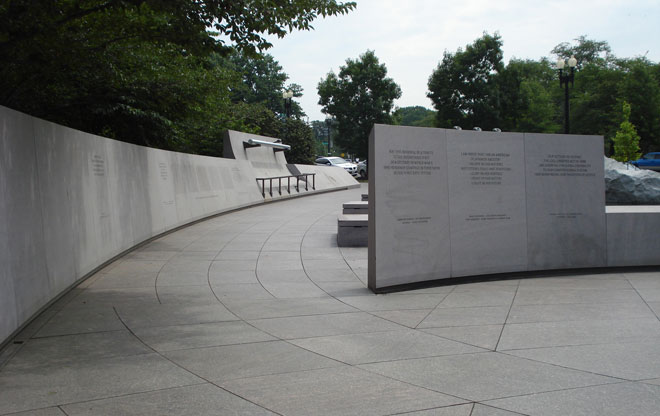
Those Who Gave Their Lives
A series of granite walls list the names of those who gave their lives in World War II.
Image: Liz Guthrie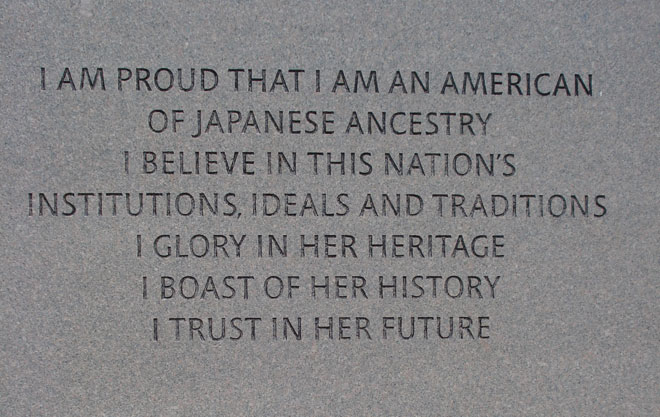
Granite Engraving Detail
An inspirational engraving by a Japanese writer.
Image: Liz Guthrie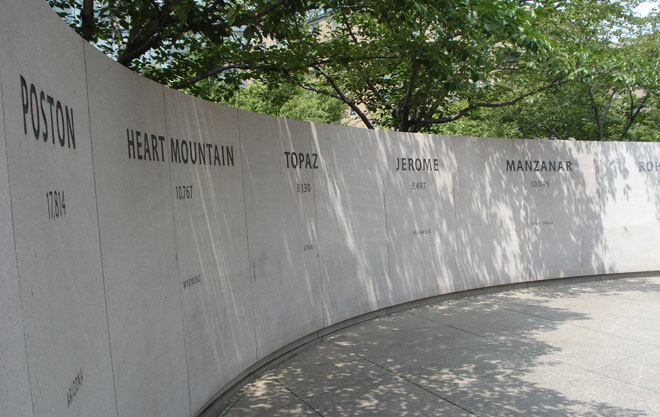
A Somber Memory: The U.S. Internment Camps
A curved granite wall inscribes the names and locations of ten internment camps across the U.S where over 100,000 Japanese Americans were held.
Image: Liz Guthrie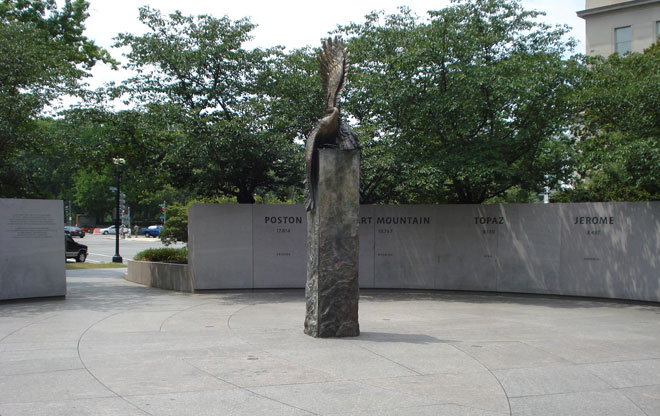
Golden Cranes
At the center of a circular paved area surrounded by the granite walls, stands a powerful bronze sculpture of two Japanese cranes caught in barbed wire. The crane is highly revered in Japanese arts and considered to be an auspicious symbol and symbol of peace.
Image: Liz Guthrie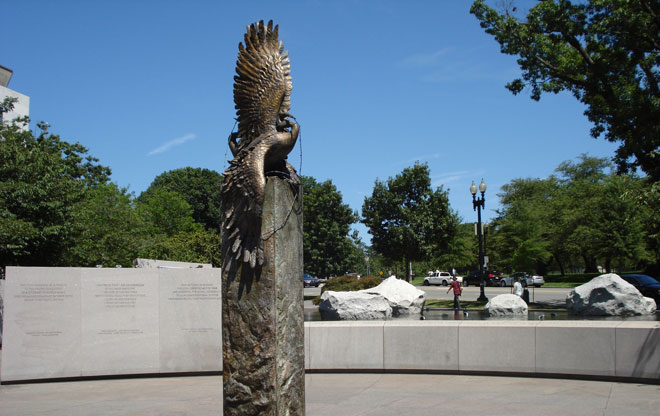
A Symbol of Hope and Peace
The cranes’ massive wings are spread wide in their struggle to be free, the barbed wire symbolizing the internment and suffering of those held. The cranes’ placement on top of a tall marble pedestal also symbolizes their strength and ability to rise above. The cranes mirror each other -- one wing pointing upwards, the other downwards, with their bodies pressed against one another, symbolize interdependence. The barbed wire in their beaks represents both the struggle in restraint and attempt to break free.
Image: Liz Guthrie